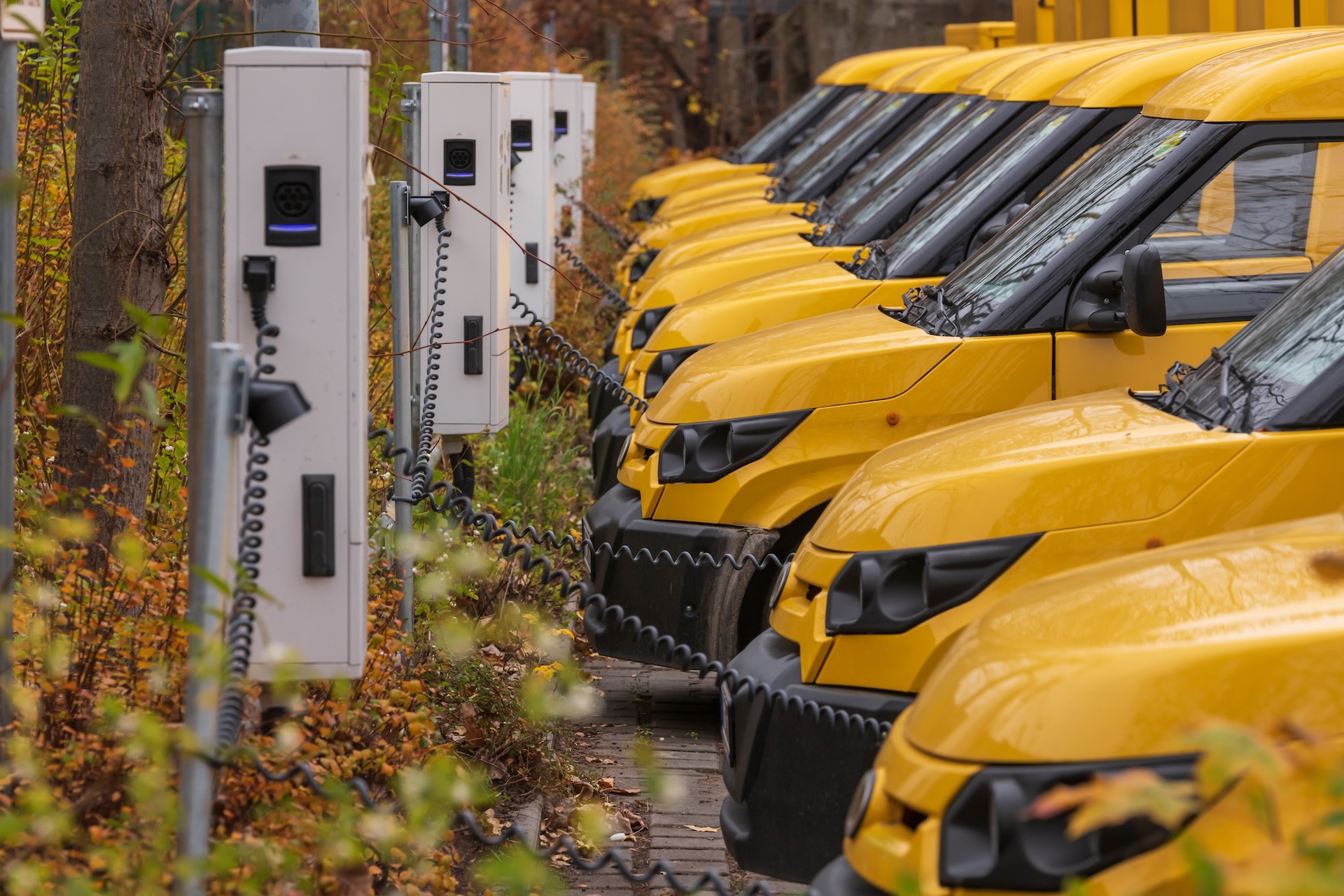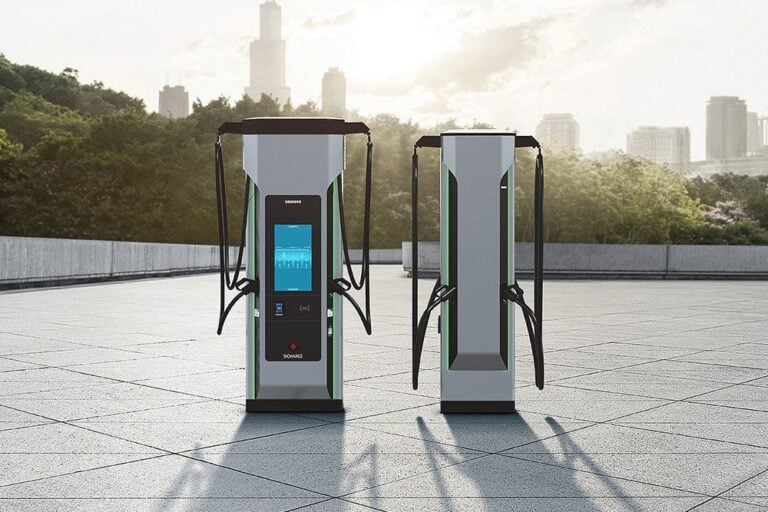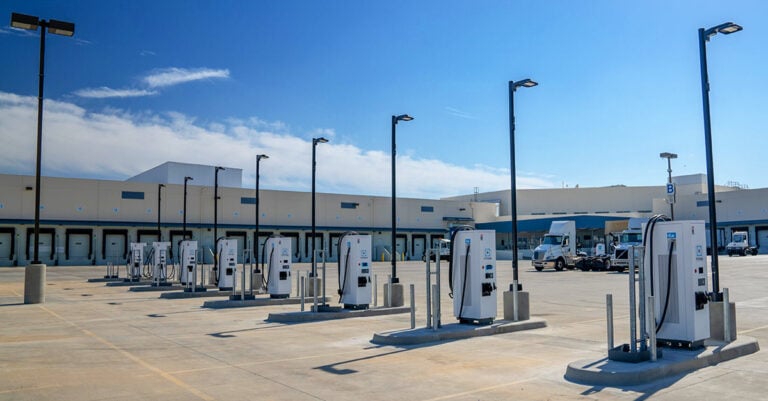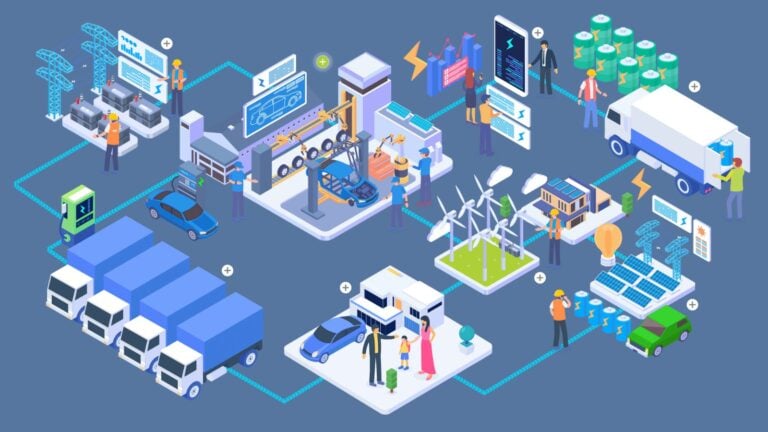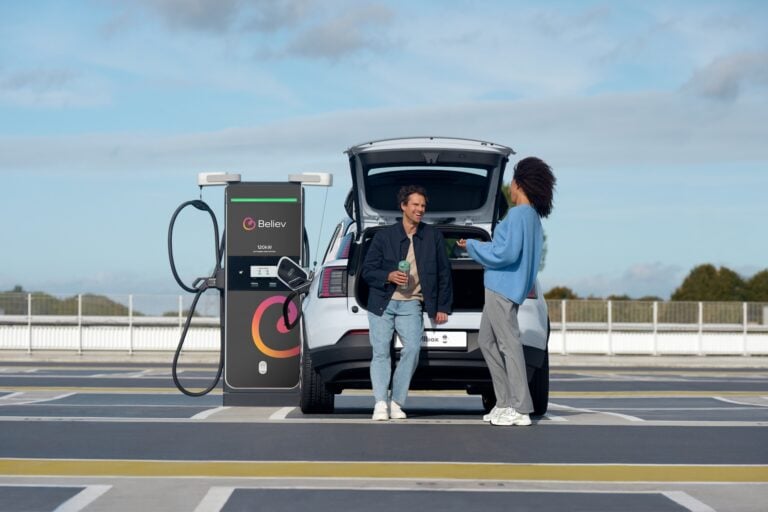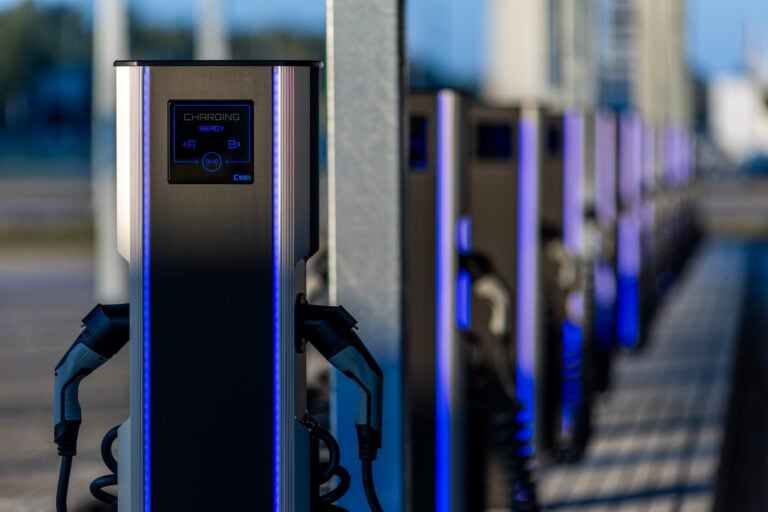Sign up for our popular daily email to catch all the latest EV news!
Here’s how to turn them into opportunities
Guest Contribution By Melvin Irizarry
The EV transition of fleets is happening at a torrid pace on a variety of fronts. The reasons are many, ranging from lower long-term fuel and maintenance costs to government incentives to polishing the brand image to meeting ESG goals.
The challenges of the EV-fleet transition are many, too.
Electrification presents new fleet-management complexities. While supply chain constraints have eased, there’s a bewildering (and growing) array of electric vehicle types and charging systems to take into account. Permitting remains, in general, a hassle. But foremost on the minds of many fleet managers are issues surrounding interconnection – in particular, determining an EV fleet’s power needs, connecting to the grid, and then ensuring that utilities can deliver that power whenever it’s needed.
The good news is, fleet owners and managers can take advantage of what can be years-long waits for utilities to fully come through. There’s an “EV” in “revolution.” But “evolution” starts with EV, and that’s how fleet owners should think about the transition from gasoline and diesel to electric.
The power-delivery bottleneck
The EV transition is a decadal proposition for the vast bulk of fleet owners. They have to keep their day-to-day operations running throughout, and they’ve poured a lot of capital into internal combustion. But the time to plan and start the shift is now. Technology can help, and the tools necessary for success are maturing quickly.
Electrification will also involve the engagement of utilities under huge pressure to build out their transmission and distribution capacity and resilience across the grid. The growth of distributed energy resources (DERs) such as rooftop and commercial solar adds to the workload – and EVs alone are estimated to drive a 38% increase in electricity demand by 2050. While EV growth may overload utilities, they are enthusiastic about the business that fleet electrification will drive, as Southern California Edison, Xcel Energy, Con Edison, Duke Energy, and others make clear.
But it’s going to be a long process. Multimegawatt power upgrades for a major fleet depot may take 18 months to as long as two-to-four years, given backlogs, competing demands, and other constraints. Utilities all have different rules and approaches, making it harder for regional or national fleets to template large numbers of interconnection requests.
To overcome that timeline, both fleets and utilities can benefit by determining the key milestones of a fleet’s electrification journey and working with the utility early (ideally, during conceptual planning) to, devise a path that makes sense for everyone.
See also: Italy Zooms Ahead with 15,000 EV Chargers – Powered by Sitetracker
Know thy fleet
Some of the key questions in forging that path have to do with vehicles. Based on capital availability, government EV incentives, and total cost of ownership estimates, how many can a fleet afford? How many does it want delivered – and how many vehicles can suppliers actually deliver – and when?
EV fleet management is another important topic. What are your charging windows and load profiles? Where are your depots? Do you need new ones based on routes and utilization? To minimize costs and maximize efficiency, when, where, and how fast should charging happen? How may that change as the fleet transitions from liquid fuels over time?
Those answers then inform charging-infrastructure needs. How many and what level of chargers do you need, and when? Can you get by charging overnight using mostly Level 2 chargers augmented with a small number of faster Level 3 chargers for topping off certain vehicles at certain times? Do you need to leave the door open for megawatt charging?
This process should yield a range of scenarios that converge at the endpoint of what an all-EV fleet’s power needs will be and the ultimate ask to the utility. But perhaps the utility can promise capacity upgrades in stages over time, which then feeds back into the pace of vehicle purchases and charging-station additions. Or a fleet owner could decide to add solar infrastructure and/or battery storage to enable a quicker EV transition in the near term while building further resilience to outages down the road. Either way, the rollout of most EV fleets will amount to years-long projects – and in the case of larger fleets, ones with countless variables across vast geographies.
GIS tools and, in particular, EV fleet management tools play key roles in all this. Larger fleets with multiple charging hubs are also turning to deployment operations management systems to coordinate multiple long-term projects simultaneously without having to proportionally boost internal resources.
A new tool for fleets going electric
The cloud-based systems currently being adopted by commercial EV charging firms help fleet owner operators and their contractors plan and manage dozens or hundreds of job sites, assets, and crews in real-time as they combine the strengths of project, asset, and work-management software. For fleets moving to electrification, these systems sharpen planning and development, tracking the status of all aspects of any given project, not least the real-time status of permitting, utilities’ progress, EVSE purchases, site candidates, approvals, and other factors affecting project success. Further along, deployment operations management systems track the work of contractors and partners including utilities, manage ongoing maintenance, and streamline vendor and labor management.
These systems include standardized project templates, automated document generation, and mobile forms to make life easier for planners, managers, and construction crews, digitizing work while providing real-time visibility throughout every step of the process. While every project has unique aspects (and these systems are easily configured to reflect that), standardization along best practices cuts redundancy, improves visibility, avoids mistakes, and speeds the pace of work.
On the maintenance end, deployment operations management systems can determine the equipment and the technicians best suited to complete a particular repair or upgrade and how that job should be prioritized. The systems can then standardize frequent job processes to make sure work is done well, done fast, and done right the first time.
Finally, these systems bring contractors into the fold, enabling collaboration on project schedules, job information and images, and site maps and history. This leads to quality deployments delivered faster and at lower cost.
Along the way, deployment operations management systems can also keep tabs on project finances and provide quick access to status and documentation needed for EV incentive-related compliance purposes. This ensures fleet owner operators and charge point operators can continue getting the funding they need to continue the EV transition long into the future.
Fleets are going electric. Utilities are on board. It’s going to be an evolution rather than a revolution, but now is the time to start. With solid planning, early outreach to utilities, and the right tools, fleets, their customers, and the environment all stand to gain.

Melvin Irizarry is a product marketing manager at Sitetracker.
Sign up for our popular daily email to catch all the latest EV news!

